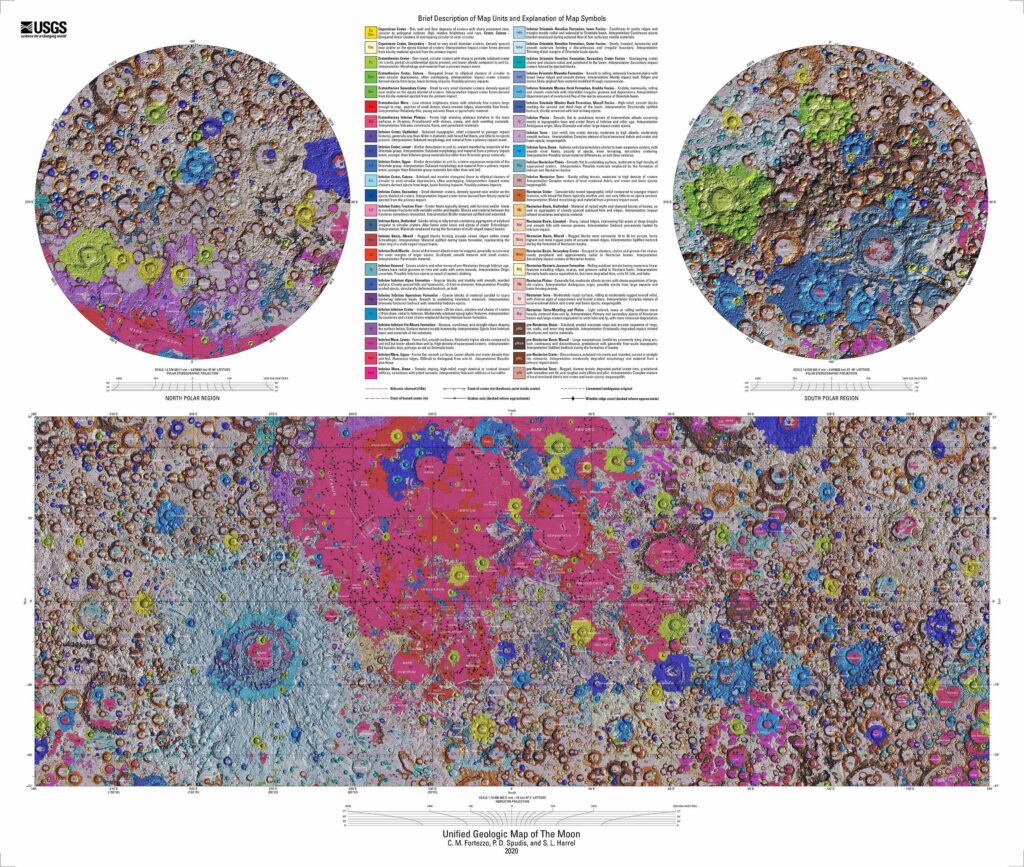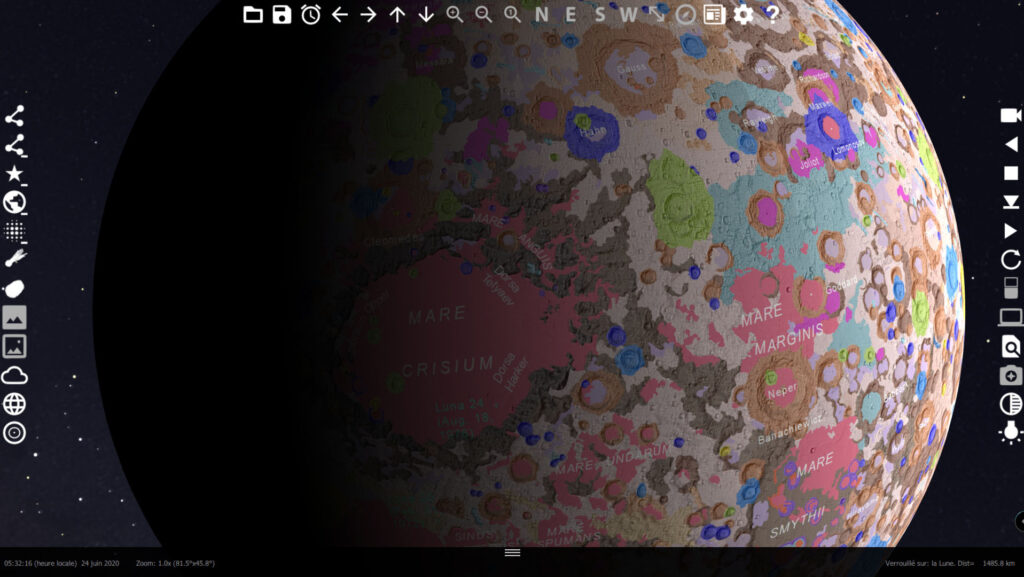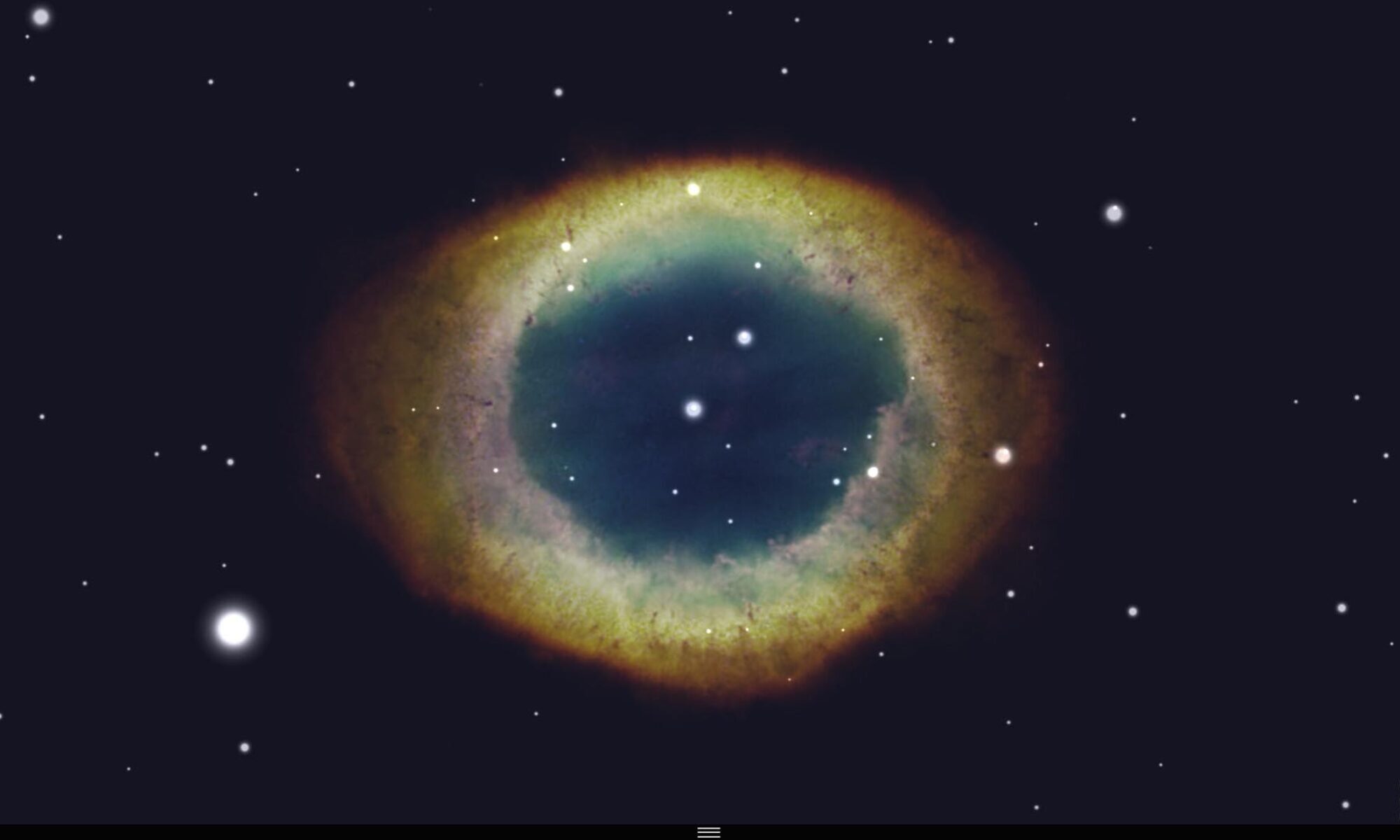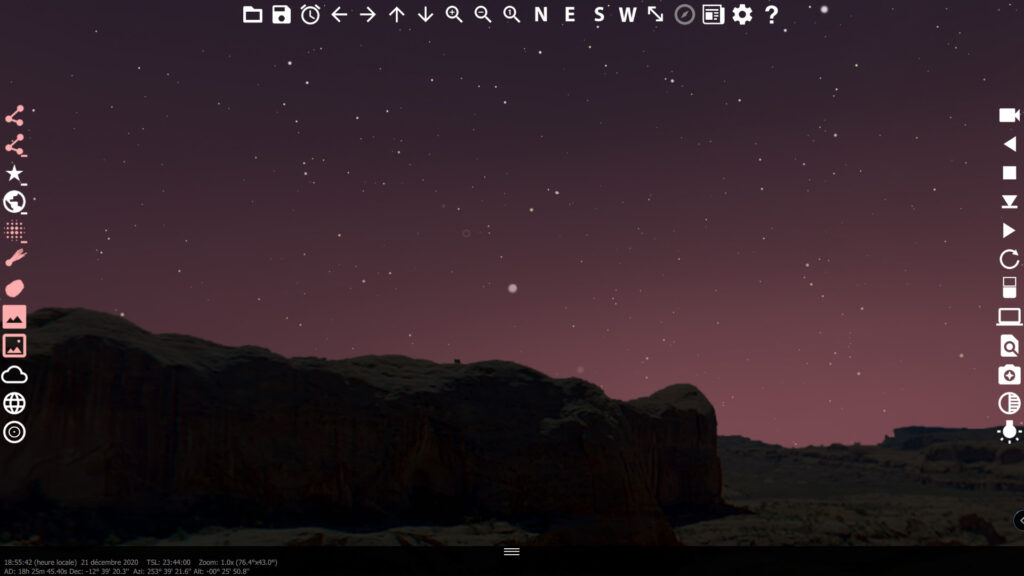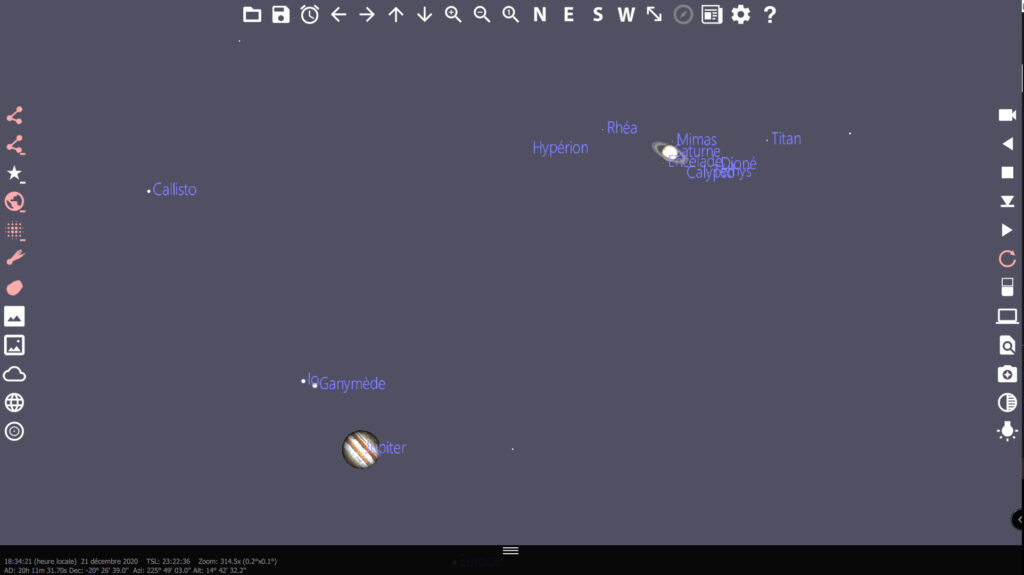WinStars 3 is back: exoplanets and Artemis 1 mission
After several months of interruption, the development of WinStars is gradually resuming. Among the recent features, we can mention the addition of all known exoplanets, which can be easily located from the planetarium mode.
Since the first discoveries by Aleksander Wolszczan and Michel Mayor and Didier Queloz in the 1990s, thousands of exoplanets are now listed in catalogs. The Corot, Kepler, and Tess space missions have significantly increased their numbers in recent years, and the James Webb Space Telescope is also contributing to their direct observation. We can mention the example of HIP 65426 b and the first image of an exoplanet obtained in mid-infrared. This is a very young giant exoplanet, about 15 million years old, located 90 astronomical units from its star. With an estimated mass of about 7 times that of Jupiter, it was discovered using the European instrument SPHERE at the Very Large Telescope in 2017.
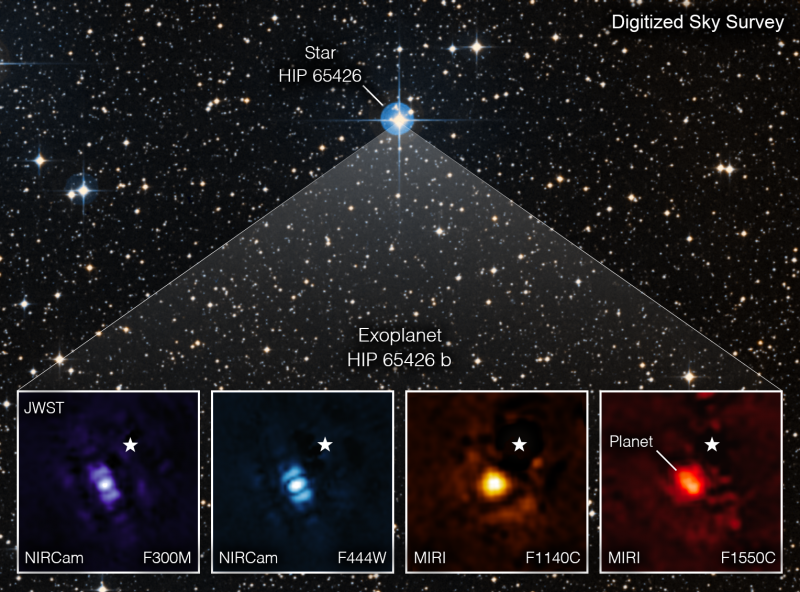
The complete list of exoplanets can be accessed from the program by entering the command “list exo” in the search bar. You can also locate an object by simply entering its identifier. The database used by W3 comes from the exoplanet.eu website and will be updated every week.
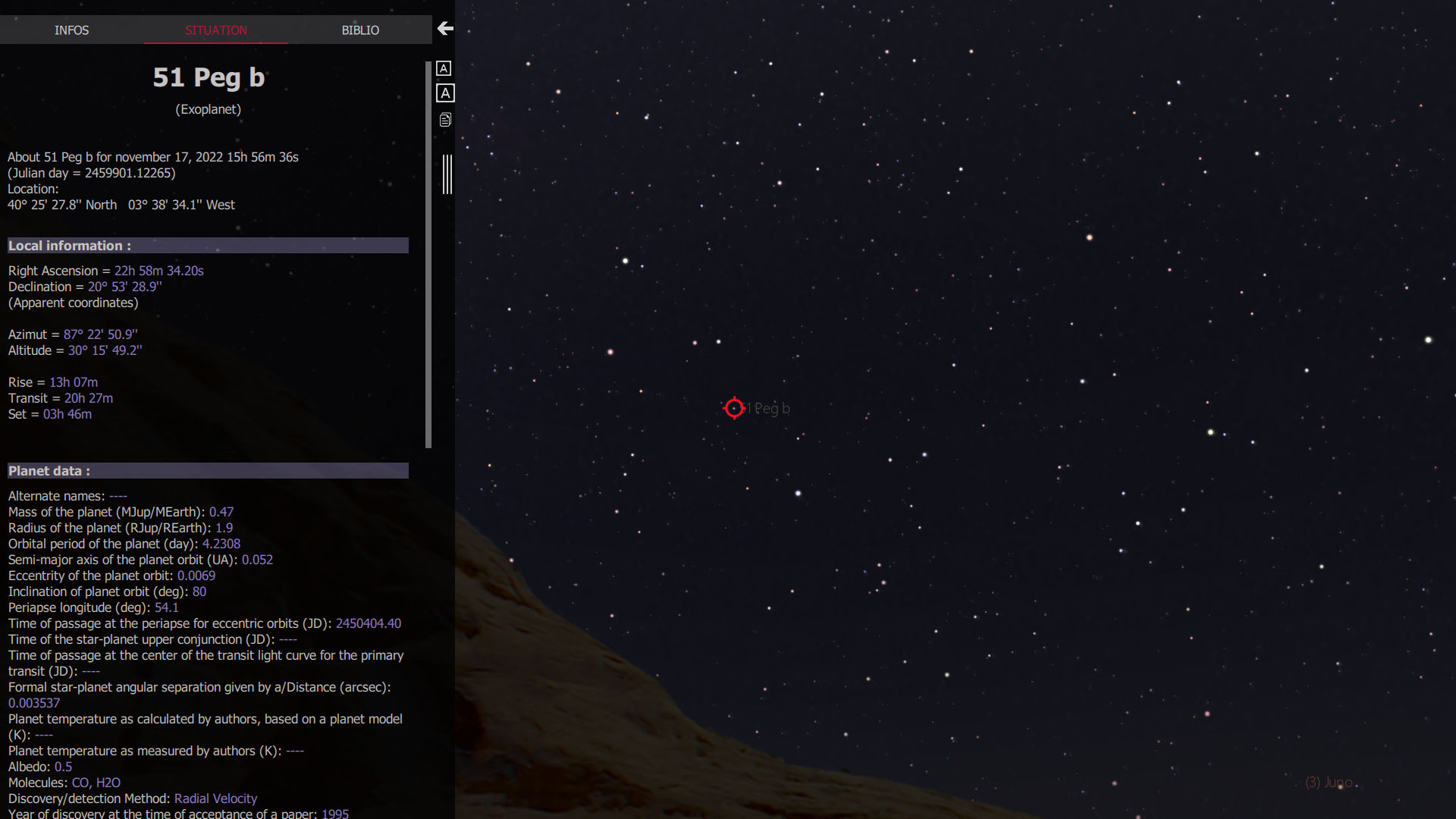
The revision 3.0.268 also proposes to follow the position of the Orion capsule in real time. The objective of this Artemis 1 mission is to return to the Moon in 2025 and ultimately maintain a more or less continuous human presence there.
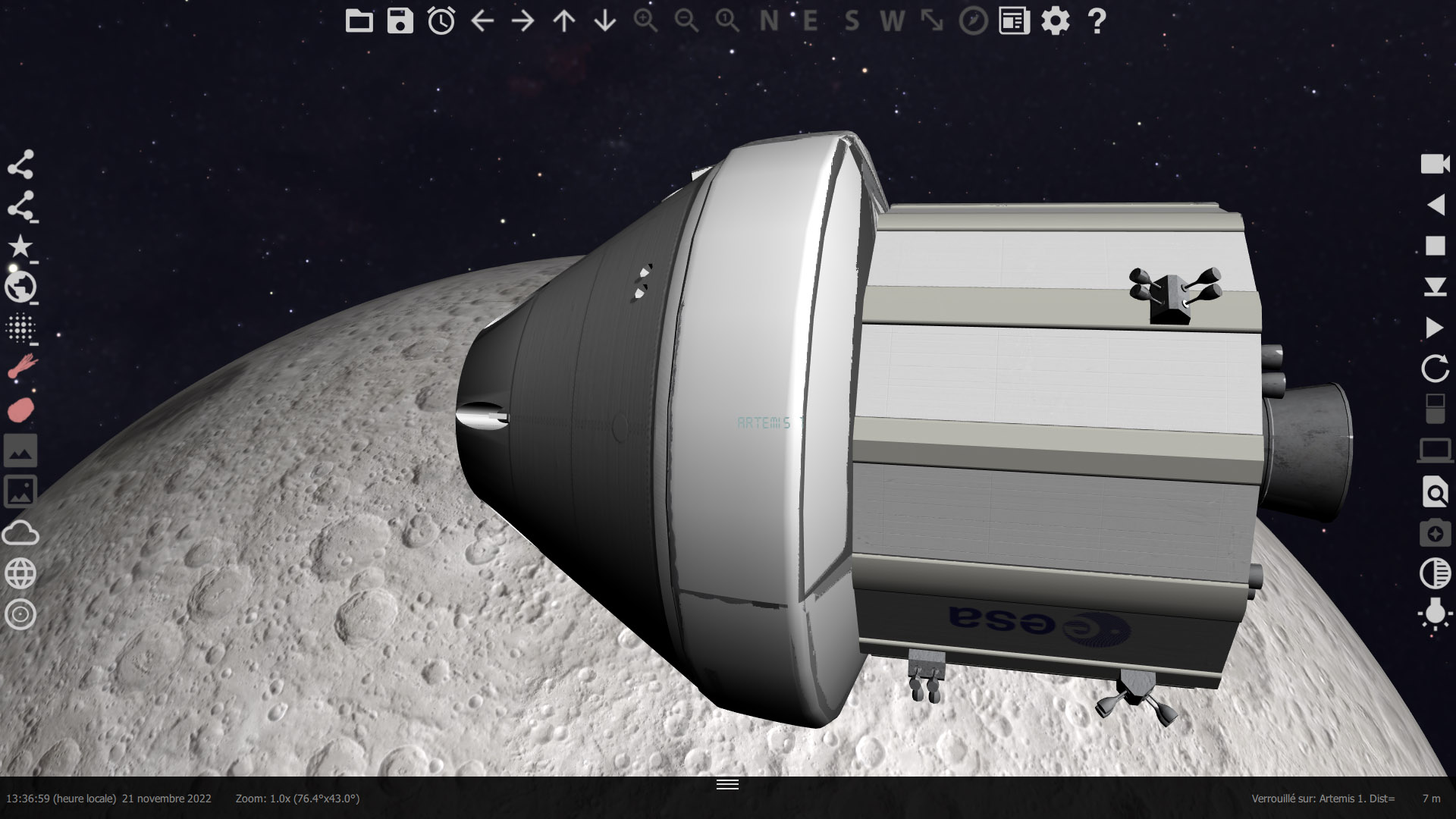
The next revisions of W3 will include the ability to visit these exoplanets in the 3D Navigation mode. I also plan to add 3D landscapes to the planetarium mode (for fun) and many more features… But I’ll tell you more about that later.
I am continuing to improve the program’s stability. It is therefore essential to report any operational anomalies using the bugtracker or forums (here and there1). Thank you for your participation!
(1) A big thank you to Sora Kozima for creating this forum on discord.com!
Comets and asteroids in WinStars 3
The latest version of WinStars focuses on comets and asteroids, representing them as accurately as possible.
To achieve this, WinStars 3 queries the 3d-asteroids.space database when the user gets closer to one of these objects and retrieves the corresponding 3D model if it is available.
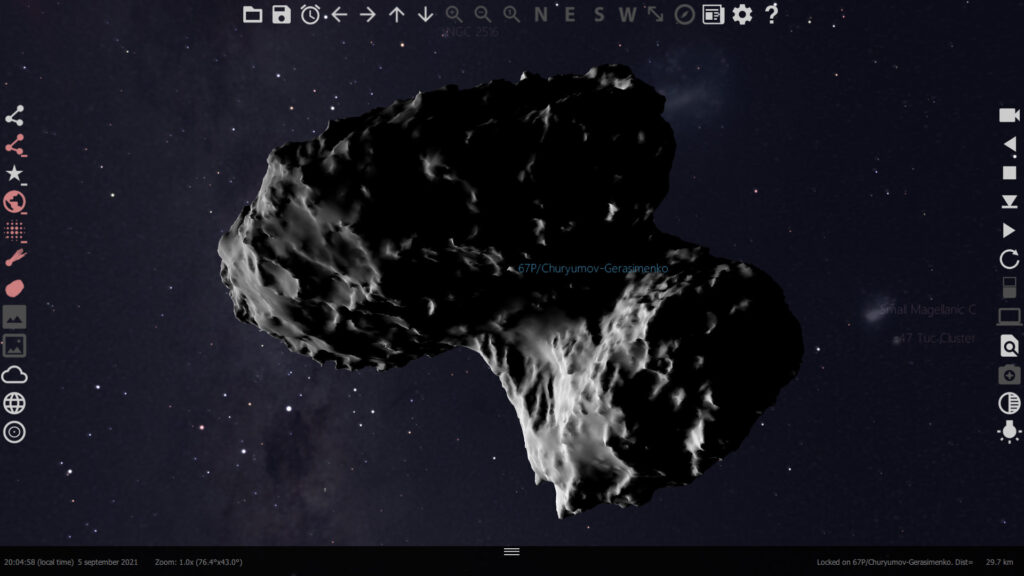
Orbiting the Sun, comets and asteroids provide us with valuable information about the constitutive elements of planets. Having presumably evolved little since their formation 4.6 billion years ago, they appear as distant remnants of the primordial nebula that gave birth to our solar system. For this reason, these small celestial bodies have increasingly attracted the attention of scientists over the past few decades, who have developed numerous techniques to learn about their physical characteristics (shape, configuration, surface, geology, rotation period, etc.). Of course, there have been some interplanetary missions that have allowed us to approach them (such as Galileo, NEAR Shoemaker, Dawn, or Rosetta), but these missions are far too complex and costly to consider exploring the 390,000 asteroids cataloged so far in this way.
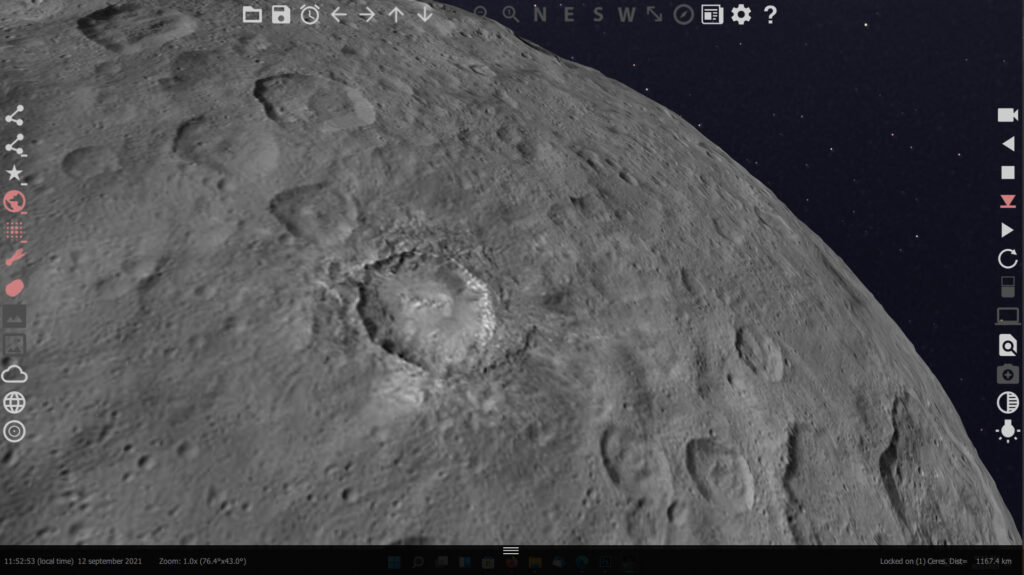
Also, when one of these objects is located less than two million kilometers from Earth, it is sometimes possible to use powerful radio telescopes to image its surface and determine its size, morphology, rotation speed, and whether or not it is accompanied by one or more small satellites.
This is how asteroid 2021 PJ1 was observed on August 14, 2021, with the 70-meter antenna of the Deep Space Network located in Barstow, California. And it is with the Arecibo radio telescope that most radar imaging studies have been conducted, reaching a catalog of a thousand objects today.
However, the photometric method of light curves is most commonly used. Asteroids have such modest diameters (< 1000 km) that it is impossible to resolve them optically with the largest ground-based telescopes. But by observing variations in brightness of asteroids over about ten hours, one can mathematically reconstruct the object’s geometry and determine its rotation period. These light curves, which show minima and maxima as well as periods, provide clues about an elongated or spherical shape, surface irregularities, the presence of large craters, or the existence of a companion.
To complete this presentation, I can only recommend reading two articles by Stéphane Fauvaud on this subject, which you will find at the bottom of the page. I had the pleasure of accompanying him to the Pic du Midi observatory over the past ten years on missions to establish these light curves. Some of them now allow us to reproduce in 3D several asteroids present in W3.
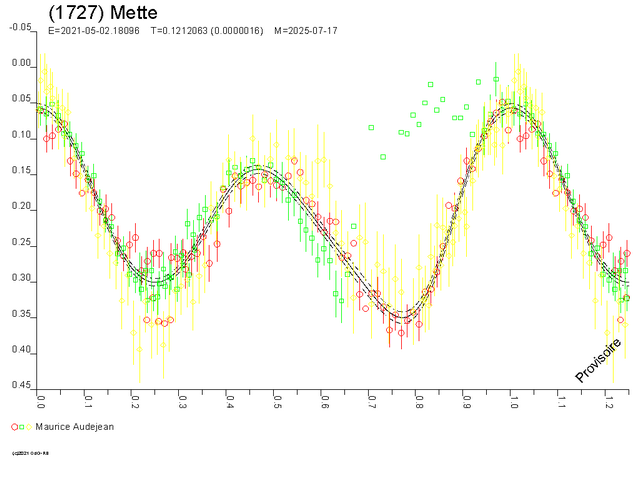 For the time being, only objects with a number < 100 are represented in 3D in the paid version.
For the time being, only objects with a number < 100 are represented in 3D in the paid version.
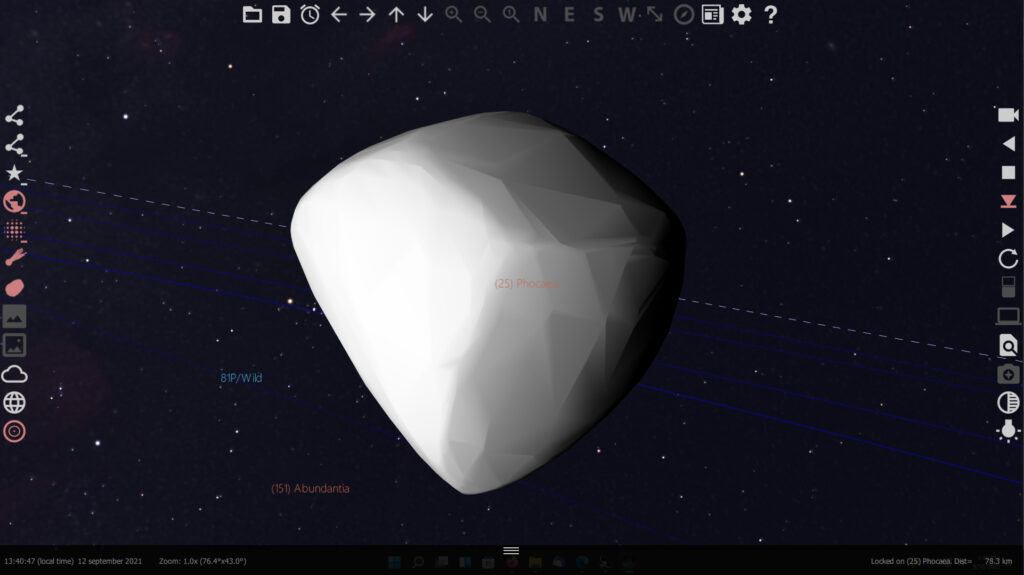
- Properties of slowly rotating asteroids from Convex Inversion Thermophysical Model.
- VLT/SPHERE imaging survey of the largest main-belt asteroids:
Final results and synthesis : aa41781-21
WinStars 3 arrives on Raspberry Pi!
The Raspberry Pi is a credit card-sized nano-computer, designed by professors from the Computer Science Department at the University of Cambridge.
This computer was created with the goal of democratizing access to computers. Sold for less than €40 in its base version, it supports several variations of the free GNU/Linux operating system and also works on proprietary operating systems, such as Windows 10 IoT Core and Google Android Pi.
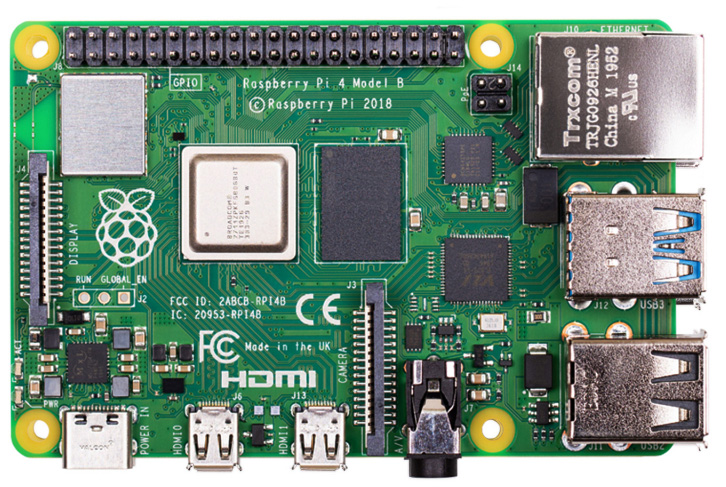
Ode to Commodore
For a few weeks now, the Raspberry Pi Foundation has been offering a version equipped with a keyboard reminiscent of popular computers from the 1980s, such as the Commodore 64, the Amiga 500, and the ZX Spectrum. It is robust and features a passive cooling system, making it an interesting ally for your astronomical observations.

WinStars 3 is now available for free on these little machines. The installation may seem complex, but all you need to do is methodically follow these instructions in a terminal.
The program runs at 20 frames per second on the Raspberry Pi 400, and it is possible to improve performance by overclocking the computer. My Raspberry Pi 400, which operates at 2000 MHz, never exceeds 40°C (104°F) when I use W3.
This is an economical solution for controlling a telescope (the Raspberry Pi version includes the Indi module) while having access to all the features of the program, particularly the massive Gaia EDR3 star catalog, which is especially useful for performing asteroid reconnaissance and light curve measurements, for example.
Arecibo: the end of a giant
Following the breakage of two cables in August and November of last year, the Arecibo radio telescope was in danger and at risk of collapsing. The rupture of a third cable ultimately caused the 900-ton central platform to fall onto the 305-meter dish.
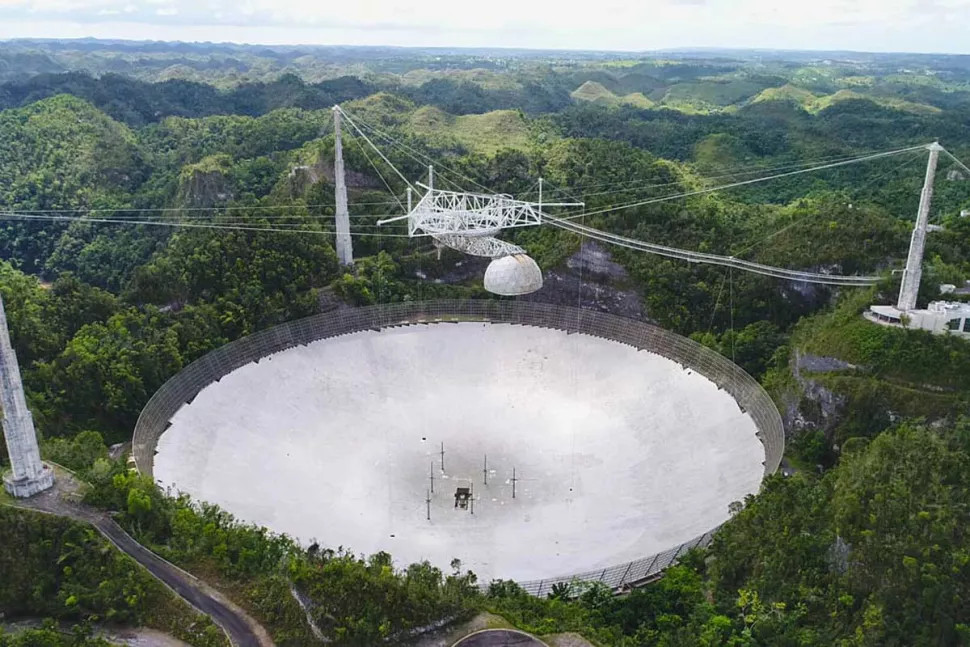
Managed by the National Science Foundation, a U.S. government agency, this radio telescope was built in Arecibo, on the north coast of the island of Puerto Rico in the Antilles. Initially designed to study the ionosphere, it also proved to be an excellent astronomical instrument responsible for numerous scientific discoveries. On April 7, 1964, shortly after its inauguration, Gordon Pettengill’s team used it to measure the rotation period of the planet Mercury. In August 1989, the observatory captured the image of an asteroid – (4769) Castalia – for the first time. The following year, Polish astronomer Aleksander Wolszczan discovered the pulsar PSR B1257+12, followed in 1992 by the detection of two orbiting planets around it.
Arecibo also served as the data source for the SETI@home project proposed by the Space Sciences Laboratory at the University of Berkeley. This distributed computing project, using internet-connected computers, had two objectives. The first was to prove the effectiveness of this method, much less expensive than the use of supercomputers. The second was to analyze signals from the Arecibo antenna to detect, unsuccessfully, the existence of extraterrestrial intelligence.
It was possible to extract metadata from SETI@home calculation blocks in versions 1 and 2 of WinStars to know the celestial coordinates and frequency used to make the recording from the radio telescope. Version 3 no longer offers this feature since the project was discontinued in March 2020.
Arecibo also served as a filming location. For example, we remember this scene from Robert Zemeckis’ movie “Contact” (1997) where Jodie Foster first sees the radio telescope she is about to work with.
The Great Conjunction 2020: Jupiter and Saturn united
Mars 2020 Mission: first samples returned to Earth
On July 30, a powerful AtlasV rocket left Earth carrying on board the Perseverance rover and the Ingenuity drone. The Mars 2020, designed to operate until 2030, is expected to enable NASA and ESA to make significant advancements in the exploration of the red planet.
It will all begin with a landing scheduled for February 18, 2021, near the Jezero crater, which presents a promising profile for the search for traces of past life. We now know that this crater was home to a lake several billion years ago.
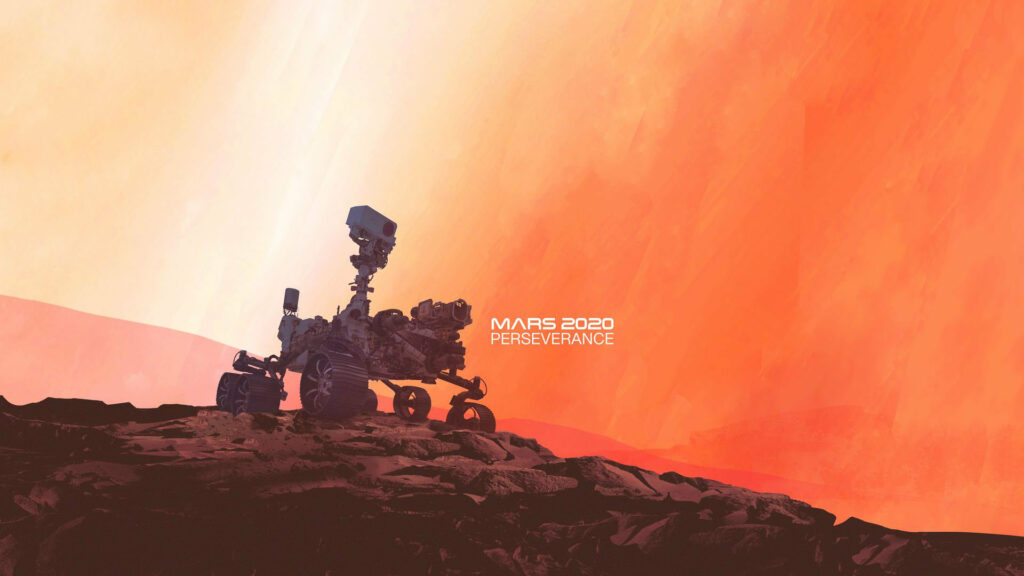
Mars 2020 is the first step in an ambitious project consisting of three missions aimed at bringing samples back to Earth for in-depth analysis. The rover will collect samples that will be carefully stored for their return to Earth. The Sample Retrieval Lander (SRL), built by NASA, and the Earth Return Orbiter (ERO), developed by the European Space Agency (ESA), are expected to be launched in the coming years to retrieve these valuable Martian soil samples.
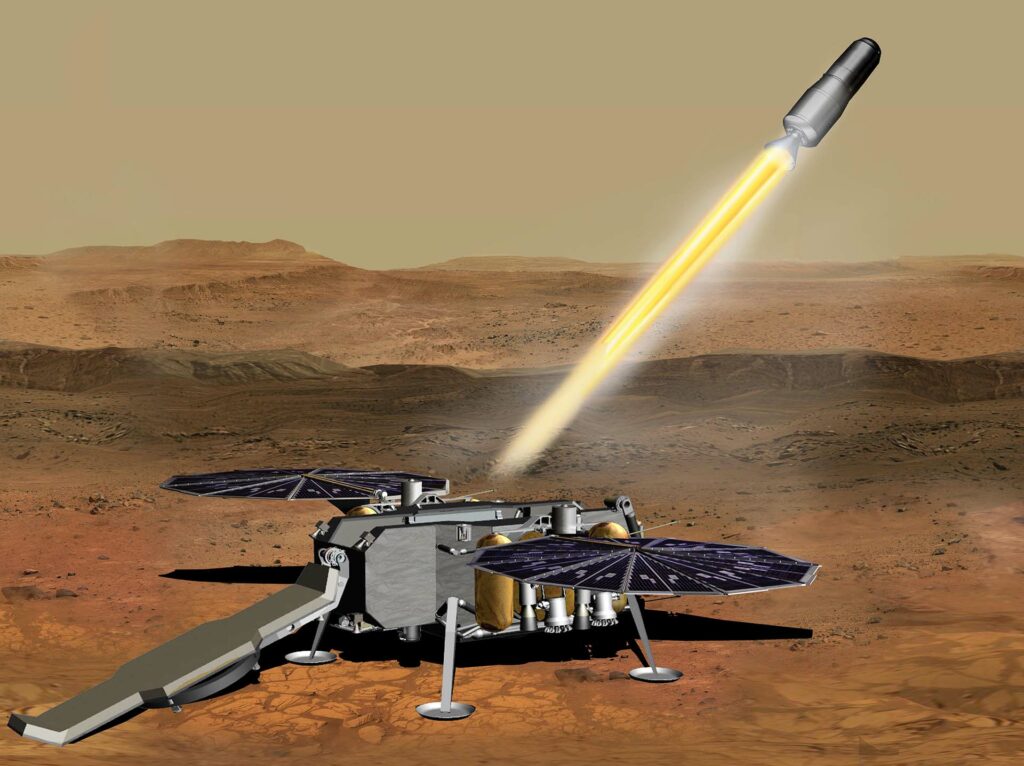
You can follow the trajectory of Mars 2020 in W3 by downloading the module of the same name. The probe’s trajectory comes directly from the Horizons server of the Jet Propulsion Laboratory.
C/2020 F3 (NEOWISE): a celestial spectacle
C/2020 F3 (NEOWISE) or Comet NEOWISE is a retrograde comet with a near-parabolic orbit discovered on March 27, 2020, by astronomers using the NEOWISE space telescope. At that time, it was a 10th-magnitude comet, located 2 AU (300 million km; 190 million mi) away from the Sun and 1.7 AU (250 million km; 160 million mi) away from Earth.
By July 2020, it was bright enough to be visible to the naked eye. It is one of the brightest comets in the northern hemisphere since Comet Hale–Bopp in 1997. Under dark skies, it can be clearly seen with the naked eye and might remain visible to the naked eye throughout most of July 2020. Until July 23, as the comet gets further from the Sun it will be getting closer to Earth. As of July 16, the comet is about magnitude 2.
For observers in the northern hemisphere, in the morning, the comet appears low above the north-eastern horizon, below Capella. In the evening, the comet can be seen low in the north-western sky. The comet can be seen in the morning and evening because it is circumpolar from about latitude 45N. The evening view is better. On July 17, Comet NEOWISE will enter the constellation of Ursa Major, below the asterism of the Big Dipper (The Plough). (If Ursa Major was upright, it would be on the right of the Big Dipper, as of July 15th.)
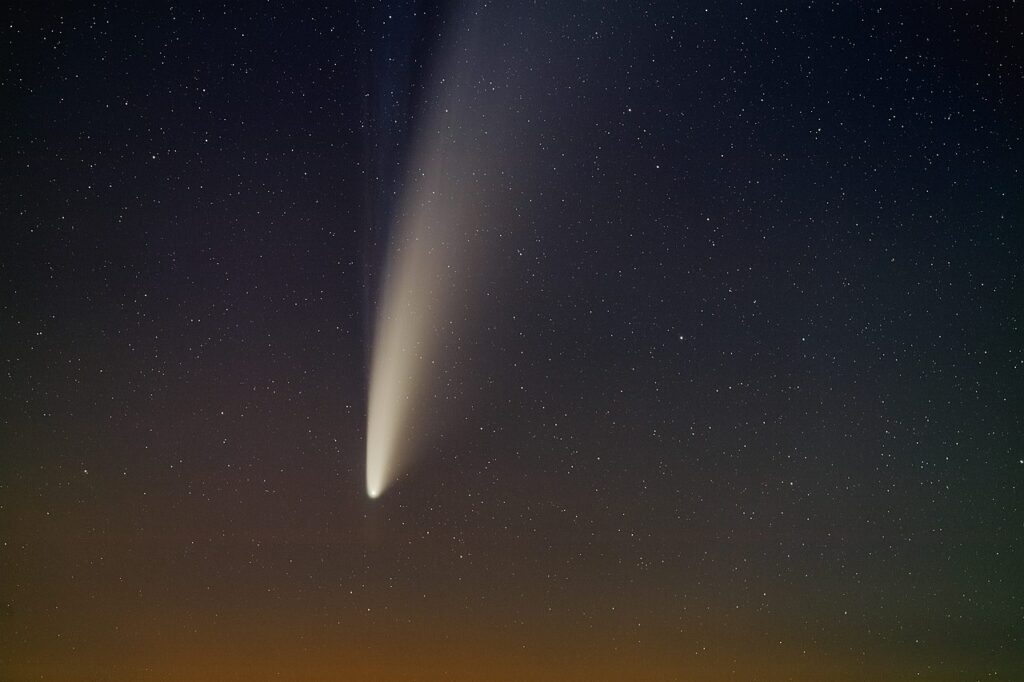 C/2020 F3 (NEOWISE). Stack of 10 exposures of 30s each. Star Adventurer mount.
C/2020 F3 (NEOWISE). Stack of 10 exposures of 30s each. Star Adventurer mount.
The object was discovered by a team using the NEOWISE space telescope on March 27, 2020. It was classified as a comet on March 31 and named after NEOWISE on April 1. It has the systematic designation C/2020 F3, indicating a non-periodic comet which was the third discovered in the second half of March 2020.
Comet NEOWISE made its closest approach to the Sun (perihelion) on July 3, 2020, at a distance of 0.29 AU (43 million km; 27 million mi). This passage increases the comet’s orbital period from about 4500 years to about 6800 years. Its closest approach to Earth will occur on July 23, 2020, 01:14 UT, at a distance of 0.69 AU (103 million km; 64 million mi) while located in the constellation of Ursa Major.
Seen from Earth, the comet was less than 20 degrees from the Sun between June 11 and July 9, 2020. By June 10, 2020, as the comet was being lost to the glare of the Sun, it was apparent magnitude 7, when it was 0.7 AU (100 million km; 65 million mi) away from Sun and 1.6 AU (240 million km; 150 million mi) away from Earth. When the comet entered the field of view of the SOHO spacecraft’s LASCO C3 instrument on June 22, 2020, the comet had brightened to about magnitude 3, when it was 0.4 AU (60 million km; 37 million mi) away from Sun and 1.4 AU (210 million km; 130 million mi) away from Earth.
By early July, Comet NEOWISE had brightened to magnitude 1, far exceeding the brightness attained by previous comets, C/2020 F8 (SWAN), and C/2019 Y4 (ATLAS). By July, it also had developed a second tail. The first tail is blue and made of gas and ions;. There is also a red separation in the tail caused by high amounts of sodium. The second tail is a golden color and is made of dust, like the tail of Comet Hale–Bopp. This combination resembles comet C/2011 L4 (PANSTARRS). The comet is brighter than C/2011 L4 (PANSTARRS), but not as bright as Hale–Bopp was in 1997. According to the British Astronomical Association, the comet brightened from a magnitude of about 8 at the beginning of June to −2 in early July. This would make it brighter than Hale–Bopp. However, as it was very near to the Sun, it was reported as 0 or +1 magnitude and remained that bright for only a few days. After perihelion, the comet began to fade at about the same rate as it had previously brightened, dropping to magnitude 2.
On July 13, 2020, a sodium tail was confirmed by the Planetary Science Institute’s Input/Output facility. Sodium tails have only been observed in very bright comets like Hale–Bopp and sungrazer C/2012 S1 (ISON).
From the infrared signature Joseph Masiero estimates the diameter of the comet nucleus to be approximately 5 km (3 mi). The nucleus is similar in size to Comet Hyakutake and many short-period comets such as 2P/Encke, 7P/Pons-Winnecke, 8P/Tuttle, 14P/Wolf, and 19P/Borrelly. By July 5, NASA’s Parker Solar Probe had captured an image of the comet, from which astronomers also estimated the diameter of the comet nucleus at approximately 5 km.
To locate the comet in WinStars, use the Search dialog box and type c/2020 f3
Source : Wikipedia
About the Android version
Are you confined and looking for an activity to fill your days? Try the Android version of WinStars!
Indeed, I need your help to better understand the issues faced by some users. To do this, simply install the app from the Google Play Store and use it for a few minutes. Then, use the “Send a report” function located in the main menu, so I can gather valuable information on the interaction between your device and WinStars 3.
If you’re feeling adventurous, don’t hesitate to send me your observations and suggestions (what should be modified, added, or removed?). This will allow me to further adapt the application to users’ needs later on.
As a token of gratitude, five lucky beta testers, chosen at random, will receive a free license to use the full version of WinStars on Windows.
If you enjoy WinStars and would like to support me, please feel free to leave a positive comment on the Google Play page of the app.
Thank you very much for your participation!
Geological map of the Moon: a unique view
The USGS (United States Geological Survey) has just released the first complete geological map of the lunar surface.
Entitled “Unified Geologic Map of the Moon”, this detailed map could be useful for future manned lunar missions. It is based on data from JAXA’s Kaguya (Selene) probe and the camera from the Lunar Reconnaissance Orbiter. The map also incorporates elements collected during various Apollo missions. A publication details the methodology that led to this result.
